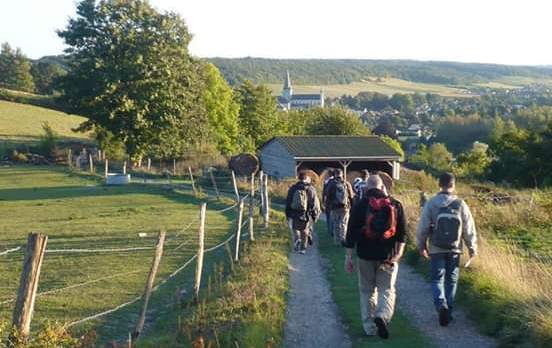On September 11, 2021, the presidents of the three major pilgrimage routes to Rome—the Via Francigena, Via Romea Germanica and Via Romea Strata—will sign a memorandum of understanding in the presence of Cardinal Secretary of State Pietro Parolin, announced the Holy See Press Office on September 4. The objective of this common path is “to promote reciprocal collaboration in the service of pilgrims from all over Europe who will come to Rome with a view to the next jubilee year” in 2025.
Opened in the Middle Ages before falling into oblivion in the 18th century, these paths are today being rediscovered and promoted by organizations such as the World Tourism Organization and the European Union—which awarded them the title “Cultural Routes” in the 1980s. The jubilee year offers the opportunity to rediscover these paths, which cross 13 European countries, from Estonia to Great Britain, and which so many pilgrims have trod for centuries.
Via Francigena
The Via Francigena or the Francigena way (that is to say “the route that comes from France”) is the pilgrimage route that dates from the 11th century and that connects Canterbury, in England, and Rome. The current itinerary is based on the journey made by Sigéric, Archbishop of Canterbury in 990, well before the Anglican Reformation.
This road runs for more than 2,500 km and crosses five countries: the United Kingdom, France, Switzerland, Italy and the Vatican. While there are many variations, the Sigéric route is the most popular today.
The road stops in great historical and spiritual places, including the Cathedral of Notre-Dame de Reims, the Abbey of Saint-Maurice d’Agaune (Switzerland), the Hospice du Grand-Saint-Bernard on the Swisss-Italian border and the papal cities of Montefascione and Viterbo (Italy).
Via Romea Germanica
The Via Romea Germanica, also called Via Melior (because it is the safest), is the route that German pilgrims once took to reach Rome. Tradition has it that it was Albert, abbot of the Abbey of St. Mary of Stade, in northern Germany, who first made this journey in the mid-13th century.
Albert left an account that tells about the spiritual discussions of two imaginary monks, Tirri and Firri. These two monks follow precisely the route the abbot had taken; today it is the one trod by many German and Italian pilgrims. The route is 2,200 kilometers long and passes through four countries: Germany, Austria, Italy and the Vatican.
Besides crossing the Alps, the Via Romea Germanica passes through places of great cultural and spiritual wealth; the German city of Augsburg and the Italian cities of Trento, Ravenna and Cortona are some of them.
Via Romea Strata
This path, the Via Romea Strata, was almost 3,ooo km and was travelled by pilgrims from Estonia on their way to Rome. On this route, pilgrims welcomed many companions including Poles, Czechs, and Austrians, amber and iron merchants and intellectuals and scientists, such as Copernicus, Galileo and Kepler.
This “road” has long been forgotten, but is now partly rehabilitated for pilgrims. It will be a safe way to reach the Eternal City from Talinn by 2025.
The route passes through nine countries: Estonia, Latvia, Lithuania, Poland, the Czech Republic, Austria, Slovenia, Italy and the Vatican. On this route, pilgrims find the Marian shrines of Marienzell (Czech Republic) and Czestochowa (Poland), the capitals Vienna and Warsaw and the Italian cities of Bologna and Fucecchio.

